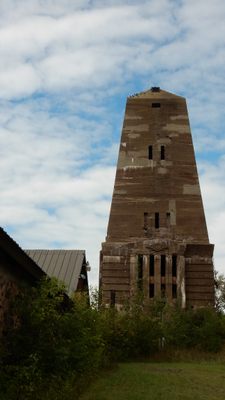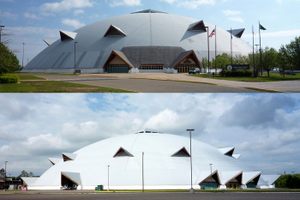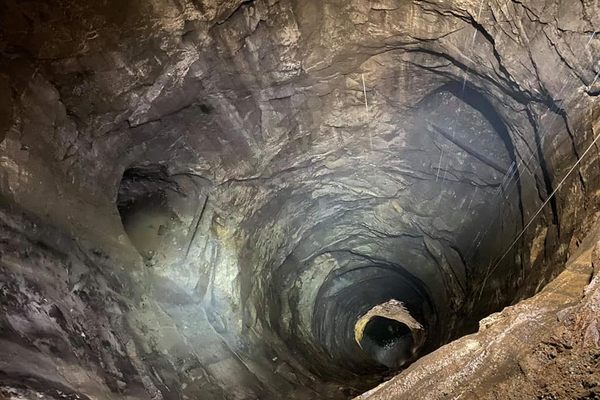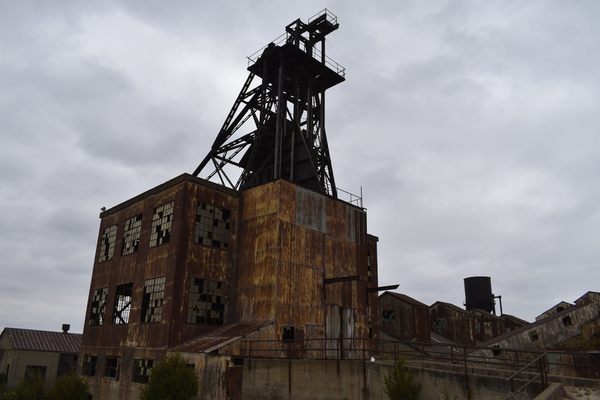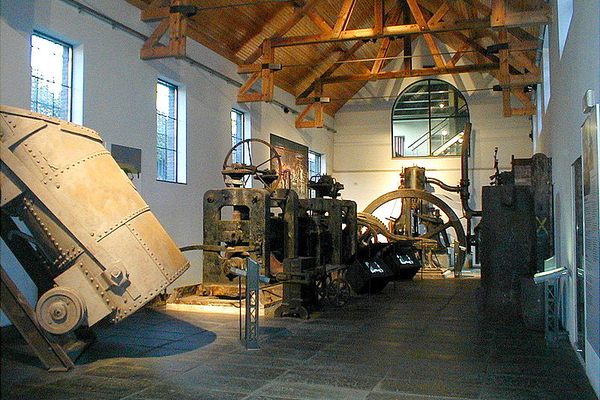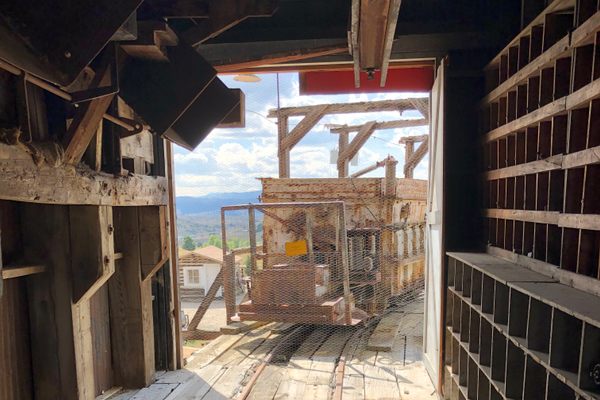About
Mines throughout the Upper Peninsula of Michigan have supplied iron and copper for over 100 years, and while some of them have long been since capped, they have found new life as museums showcasing the history of the mines and works of the many miners. In Ishpeming, at the former Cliffs Shaft Mine, now a museum, one large modern tower tops the mine's C shaft, but above A and B shafts are Egyptian Revival obelisks.
In mining, the structure above a vertical shaft that holds the elevator works and hoists is called a headframe. Atop two shafts of the country's largest hematite mine, Cliffs Shaft Mine, the wooden headframes were in need of replacement in 1919. The head of the newly formed Cleveland-Cliffs Iron Company, William G. Mather, wanted to see a distinct architecture for the new headframes since they would be seen from the entire local area. The company commissioned Prairie School architect George Washington Maher to design the new headframes, and he designed obelisks in the Egyptian Revival style. The obelisks above A and B shafts are made of reinforced concrete and over 96 feet tall. They can still be seen from US Route 41 and on the way into Ishpeming's business district. The obelisks can be seen on signs and plaques in the city.
The museum tour shows visitors around the B shaft obelisk for great photography, as well as the entry to the C shaft, topped by a more modern headframe in 1955, and exhibits about mine life and minerals donated by local rockhounds. The mine was capped in 1967, and the obelisks still rise over the Upper Peninsula.
Related Tags
Know Before You Go
Open June through September, Tuesdays through Saturdays from 10 AM - 4 PM.
Community Contributors
Added By
Published
July 9, 2016
